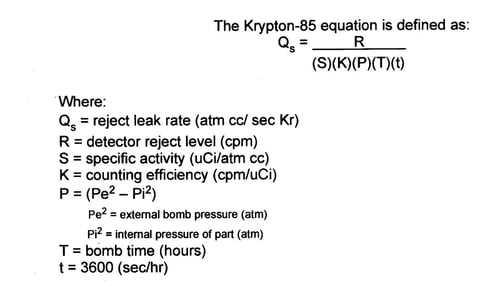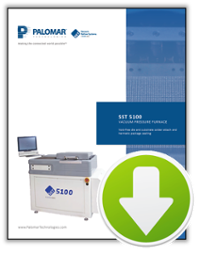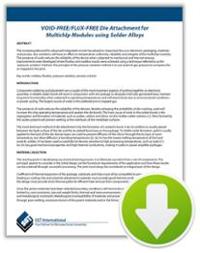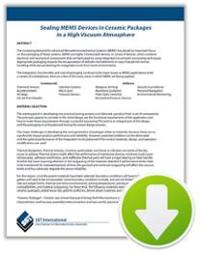In part three of this series we will continue looking at the various methods for determining the leak rate of microelectronic devices with internal cavities, in compliance with MIL-STD-883J. As a review, the standard provides for eight (8) methods for verifying device hermeticity given certain conditions. These methods are:
- Trace Gas (He)
- Radioisotope (Kr85)
- Perfluorocarbon Gross Leak
- Optical
- Penetrant Dye Gross Leak
- Weight Gain Gross Leak
- Radioisotope (Kr85) (Thermal Leak Test)
- Cumulative Helium Leak Detection (CHLD)
The second method in the list is Radioisotope (Kr85), which is sometimes referred to as krypton testing. This technique is similar to the helium fine leak test method, except the tracer gas is a mixture of radioactive krypton-85 and air. Krypton-85 is a radioactive inert noble gas that emits very weak gamma rays and beta particles. This method uses a low concentration of krypton gas (range 0.01%) in air. The test parts are exposed to the Kr85/air mixture for a fixed amount of time and pressure. The parts are then blown off (air washed) to remove residual surface gasses. For example, parts are soaked in the radioactive gas for a minimum of 12 minutes at 2 PSIA. Parts are then air washed to remove surface gas and placed in a chamber connected to a scintillation crystal detection system that actually counts the number of Kr85 particles inside the package. This is different than the helium fine leak test, which measures the rate of helium leaking out of the device. The "absolute" leak rate of the device is calculated by a simple formula (see below) based on the concentration of Kr85/air tracer gas used, the bombing time and pressure, and the measured reading on the device. The krypton-85 test method has the following advantages: lower leak rate detection (capable of < 10-12 mbar l/s Air) with no vacuum or helium high pressure for long hours, therefore shorter leak testing time. This method can be used for gross leak testing with a Geiger Muller tube for detecting beta particles.
The krypton-85 test method has the following advantages: lower leak rate detection (capable of < 10-12 mbar l/s Air) with no vacuum or helium high pressure for long hours, therefore shorter leak testing time. This method can be used for gross leak testing with a Geiger Muller tube for detecting beta particles.
Check out parts one and two of this blog:
Part 1: Methods of Testing Device Hermeticity
Part 2: Trace Gas (He)
References
1. MIL-STD-883J
w/CHANGE 5
Method 1014.14
7 June 2013
United States Department of Defense, Defense Logistics Agency
2. A Practical Guide to TM 1014
Tom Green
© Copyright NorCom Systems Inc 2005
http://www.norcomsystemsinc.com
3. Oneida Research Services Inc., Krypton-85 Radioisotope Leak Testing
Links
1. Defense Logistics Agency, (DLA) History
2. http://www.norcomsystemsinc.com
For further information, download these resources:
| SST 5100 Brochure | Void-Free Flux-Free Die Attach Paper | MEMS Packaging Paper |
 |
 |
 |
---
Zap (Pierino) Zappella
Process Development Engineer
SST Vacuum Reflow Systems